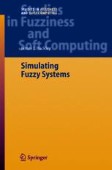Search
Search Results
-
Toward fair graph neural networks via real counterfactual samples
Graph neural networks (GNNs) have become pivotal in various critical decision-making scenarios due to their exceptional performance. However,...

-
A hyperparameter study for quantum kernel methods
Quantum kernel methods are a promising method in quantum machine learning thanks to the guarantees connected to them. Their accessibility for...

-
Psychosocial factors that favor citizen participation in the generation of scientific knowledge
BackgroundCitizen participation in the generation of scientific knowledge is one of the major challenges facing science and technology systems. This...

-
Optimizing a Production Line
The simple production line considered in this chapter is shown in Fig. 20.1. This problem has been adapted from an example in [1]. This situation is...
-
Queuing I: One-Step Calculations
In this chapter we show situations where simulation can produce the same results as fuzzy calculations which employ the extension principle. We argue...
-
Simulation Programs
In this chapter we present some of the GPSS programs used in Chaps. 9–26. We had to omit many programs in order to keep this chapter. less that 20...
-
Summary and Conclusions
The first objective of this book is to explain how many systems naturally become fuzzy systems. The second objective is to show how regular (crisp)...
-
Dependability of Mobile Robots in Direct Interaction with Humans
Operating interactive mobile robots in unmodified natural environments such as in museums or at exposition areas impose requirements on the robots,...
-
Next Generation Teach Pendants for Industrial Robots
Teach pendants for industrial robots have sometimes been quite rudimentary in the past, and often enough users had to learn to cope with whatever is...
-
Adaptive and Distributed Coordination Algorithms for Mobile Sensing Networks
Consider n sites evolving within a convex polygon according to one of the following interaction laws: (i) each site moves away from the closest other...
-
4 Co-existence: Physical Interaction and Coordinated Motion
Co-existence an co-operation between a human and a machine which can move and act in an autonomous mode involves a form of interaction which goes...
-
The Robotic Bar – An Integrated Demonstration of a Robotic Assistant
Coming out of the labs, the first robots are currently appearing on the consumer market. Initially they target rather simple application scenarios...
-
Flocking in Teams of Nonholonomic Agents
The motion of a group of nonholonomic mobile agents is synchronized using local control laws. This synchronization strategy is inspired by the early...
-
Learning Behavioral Sequences by Means of Nonlinear Dynamics
We present a software architecture for the behavioral organization of a mobile robot which is entirely based on nonlinear dynamical systems. The...
-
The Control Architecture of Care-O-bot II
Robot assistants act in dynamic environments and have to cope with changing situations: they must be able to sense the world and to control their...
-
Robotic Home Assistant Care-O-bot II
Technical aids allow elderly and handicapped people to live independently in their private homes as long as they wish. As a contribution to these...
-
Statistical Recognition of Motion Patterns
One key prerequisite for a machine to interact intelligently with people is its ability to recognize humans as interaction partners and to understand...
-
Machine Shop I
The queuing system in this chapter is shown in Fig. 11.1. This application was adopted from a problem in ([1], p.594). We continue this problem in...
